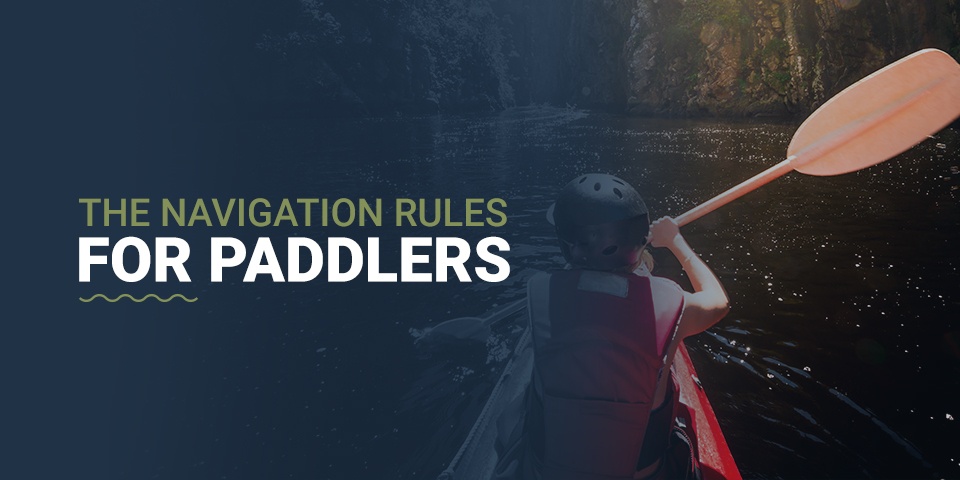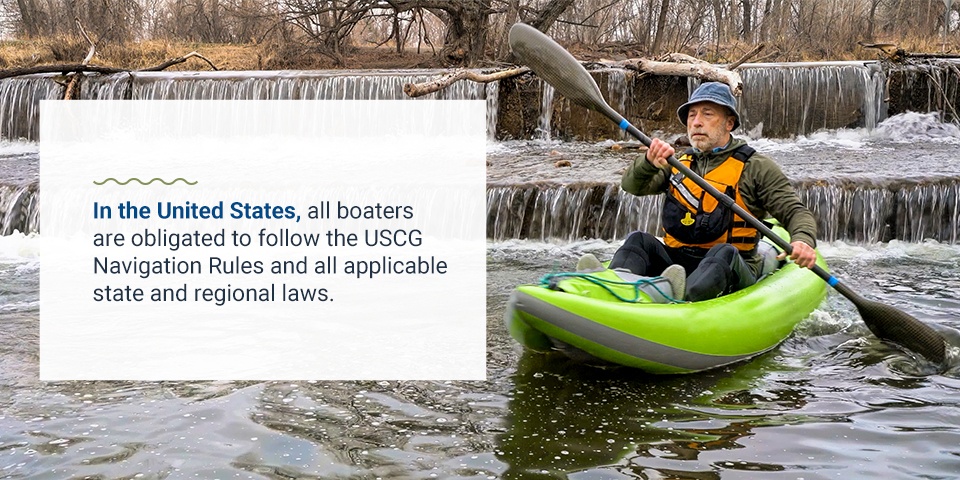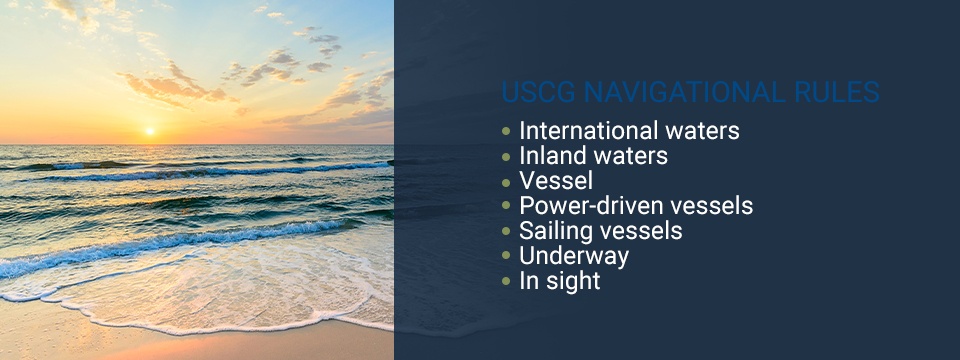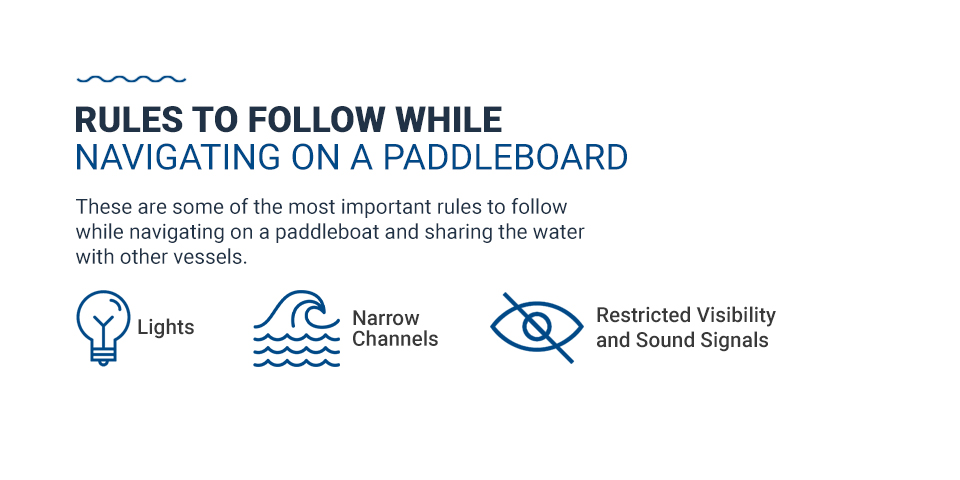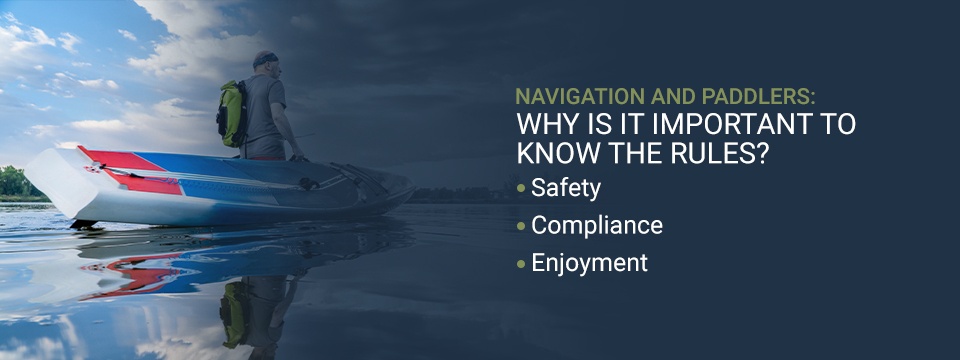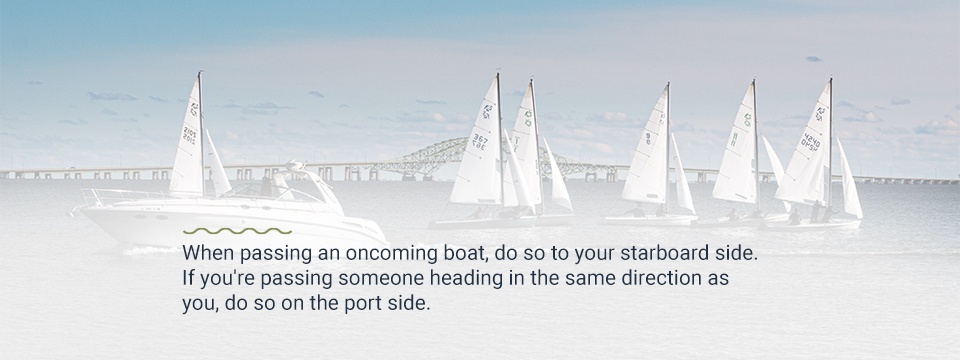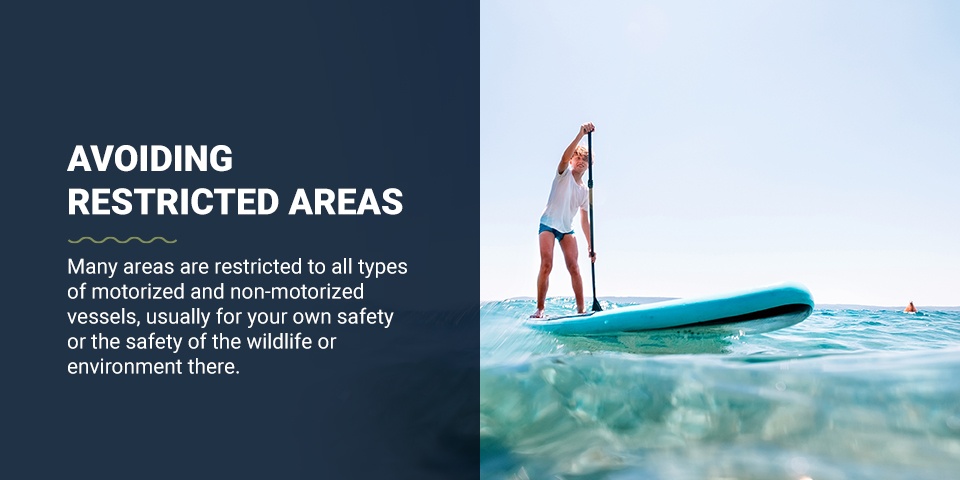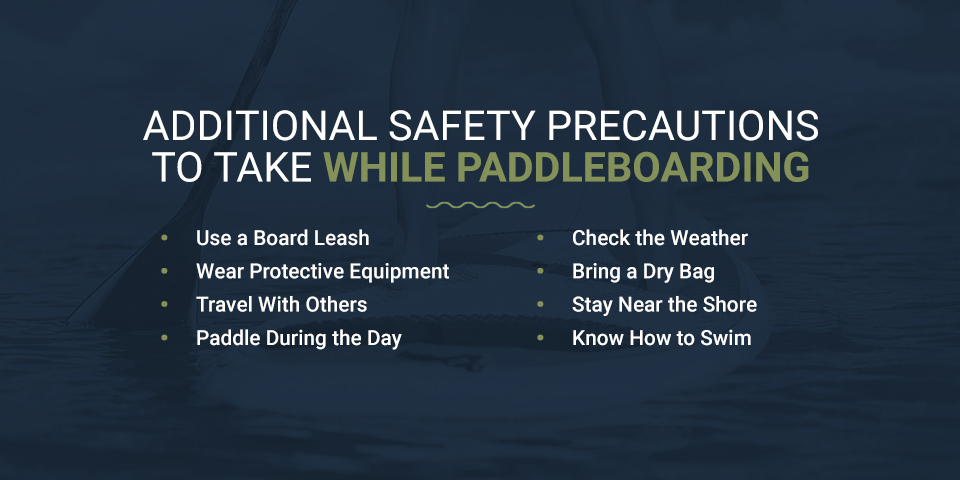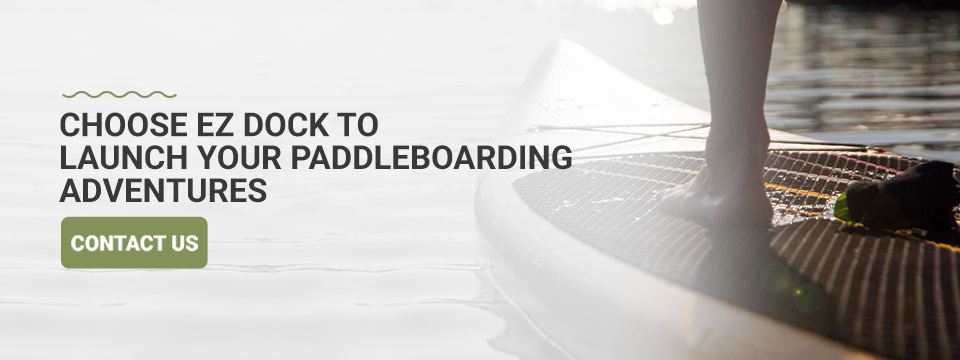Filters
The Navigation Rules for Paddlers
The recreational boating market is at an all-time high, largely due to the growing popularity of non-motorized boating, including paddleboarding. Like kayaking and canoeing, paddleboarding gives boaters the unique opportunity to travel on all types of water — ocean, river, lake or pond — while getting a full-body workout and fresh air. Because paddleboards have no motor, they’re more affordable than a traditional boat, making it easier to get started in the sport than other boating ventures.
As more people head to the water with paddleboards in tow, it’s critical that everyone practices boat safety and understands the importance of paddleboard and boat navigation rules in the water.
Read the full article or skip to a specific section:
- What Are Navigation Rules for Paddlers and Where Do They Come From?
- Rules to Follow While Navigating on a Paddleboard
- Navigation and Paddlers: Why Is It Important to Know the Rules?
- Common Paddleboarding Scenarios
- How Do Navigation Rules Differ Between Paddleboards, Kayaks and Boats?
- Additional Safety Precautions to Take While Paddleboarding
- Choose EZ Dock to Launch Your Paddleboarding Adventures
What Are Navigation Rules for Paddlers and Where Do They Come From?
Countries, states and jurisdictions all have rules in place for inland waters, while the United States Coast Guard (USCG) and similar bodies across the continent have guidance for international waters. In the United States, all boaters are obligated to follow the USCG Navigation Rules and all applicable state and regional laws. In many cases, the U.S. Coast Guard’s Navigation Rules may overlap with local ordinances.
USCG Navigational Rules
By the late 1900s, boating had become equally about utility and recreation, a sentiment that has continued through the last several decades. It became increasingly apparent that there needed to be an established set of international laws to guide vessels of all shapes and sizes. The USCG developed the Navigation Rules, which were later amalgamated and formalized at the Convention on the International Regulations for Preventing Collisions at Sea in 1972.
The USCG Navigation Rules use specific language throughout the manual. To fully understand the extent of those rules, you must first know the definitions of some common terms used:
- International waters: International waters refer to all oceans and connecting waters, so long as a seagoing boat can navigate onto them.
- Inland waters: Inland waters are all lakes and rivers not considered ocean water. Inland waters include the Great Lakes in all areas where Canadian law does not apply.
- Vessel: A vessel is any watercraft or water-based transportation, including paddleboats, paddleboards, kayaks, canoes, ships, sailboats, seaplanes and similar.
- Power-driven vessels: Any vessel propelled by machinery is considered power-driven.
- Sailing vessels: Sailing vessels have and rely on a sail for movement, though they may have a propeller aboard.
- Underway: An underway vessel is not anchored or otherwise secured to the shore or dock.
- In sight: When vessels are in sight of one another, it means one can visually observe the other.
Boating laws make a distinction between motorized and non-motorized vessels, including paddleboards and paddleboats. Some rules also make distinctions depending on the length of the vessel. Most paddleboards fall between 7 and 15 feet long, or around 2 to 4.5 meters.
Rules to Follow While Navigating on a Paddleboard
Paddleboarding is popular for several reasons. It’s a fun, beginner-friendly way to stay active and get on the water, and the board’s narrow shape makes it easier to fit in otherwise inaccessible areas and channels. With these benefits, paddlers must also practice extra caution, as each person’s safety relies on maintaining a good balance on the board and being constantly aware of one’s surroundings.
These are some of the most important rules to follow while navigating on a paddleboat and sharing the water with other vessels.
Lights
If you’re navigating in water traffic anytime between sunset and sunrise, you’re required to have a light that you can use to signal your location to other boaters. This law applies in all weather conditions.
Vessels under oars and less than 12 meters long, including paddleboats and paddleboards, must have either one lantern at the top of the mast and sidelights or sidelights and a stern light. You can use an electric torch in place of the lantern. All masthead lights must be visible from 2 miles away, while sidelights should be visible from 1 mile away. Stern lights should be visible from 2 miles away.
Never use a flashing light or strobe light while on the water, as it could cause vision impairment.
Narrow Channels
If you’re in or approaching a narrow channel, vessels 20 meters or shorter must not impede travel for larger vessels or any vessel that can only safely navigate inside that channel. Never anchor inside a narrow channel and stay aware of other vessels to avoid collisions. Stay as close to the edge of the channel on your starboard side as possible.
If you’re in a narrow channel during a period of restricted visibility, like after dark or in dense fog, slow your speed and use your light as required.
Restricted Visibility and Sound Signals
Restricted visibility doesn’t just refer to darkness — it can also mean heavy downpours, fog, mist, sandstorms, snow or smoke. Remember, if you can’t see your surroundings, your surroundings can’t see you. Paddleboarding and boat navigation rules for restricted visibility include:
- Carry a whistle on your vessel or person at all times.
- Sound a signal with your whistle equal to one prolonged blast every two minutes. A prolonged blast lasts between 4 and 6 seconds.
- If you hear a whistle or foghorn sound, stop moving and sound a response. Do not move forward until you know how close other vessels are to you and what condition they are in.
- Maintain a constant lookout, via sight and hearing, during restricted visibility.
If you hear one short blast or a blast that lasts one second, it means the vessel is altering course to starboard. Two short blasts mean they’re adjusting to port. Remember to watch for flashing lights or other visual signals while listening to alarms.
You should also sound a prolonged blast signal if you’re in a narrow channel or other challenging area and can’t avoid a collision. Listen for the other vessel to do the same. If you or another vessel is in danger, alert others with a minimum of five short, rapid blasts, accompanied by a visual signal if possible.
Navigation and Paddlers: Why Is It Important to Know the Rules?
Understanding and abiding by all navigational rules is an essential part of paddleboarding for the following reasons:
- Safety: According to USCG statistics, there were more than 4,000 boating accidents in 2019. Some of the leading causes of these accidents were lack of a proper lookout, inattention, excessive speed and operator inexperience. Learning the paddleboard and boat navigational rules will give you the knowledge you need to stay safe when you meet common obstacles, like other boaters, inclement weather or restricted areas.
- Compliance: Failure to abide by local and federal boating laws could result in legal action or fines, especially if you cause an accident or endanger other boaters and wildlife.
- Enjoyment: When everyone plays by the rules — including allowing vessels plenty of space to make turns and keeping a lookout for one another — the water becomes a safer and more enjoyable place.
Common Paddleboarding Scenarios
Every body of water and paddling adventure is different. The more prepared you are for the possibilities, the safer and more enjoyable your experience will be. Three common stand-up paddleboarding (SUP) scenarios to be aware of are passing and being passed by other vessels, avoiding collisions and staying away from restricted areas.
Passing Vessels
When passing an oncoming boat, do so to your starboard side. If you’re passing someone heading in the same direction as you, do so on the port side. Always maintain a safe distance from other boaters while passing and take wide turns whenever possible.
Practice caution when passing motorized boats and avoid it if possible — they move faster than you can paddle, so passing could become tiresome or dangerous. The easiest and safest way to pass is to go paddling as a group and pass vessels together as a singular unit.
If another boat is attempting to pass you, slow down if necessary, and keep a lookout. Show you understand the other vessel’s intentions and give it the space it needs to move forward.
Avoiding Collisions
Part of being a responsible paddleboarder is keeping watch of your surroundings and taking preventive measures to avoid colliding with other paddlers, boaters or obstacles. Should you approach another vessel, always behave as if a collision were to occur, even if you’re unsure. Slow your speed or alter your course as needed. Always give vessels in distress enough room to navigate.
Should you have to turn in a motorized boat’s wake to avoid a collision, always turn the bow of your SUP into the wake to stay afloat and prevent tipping in the movement.
Avoiding Restricted Areas
Always review a map and list of local laws when paddling in a new place. Many areas are restricted to all types of motorized and non-motorized vessels, usually for your own safety or the safety of the wildlife or environment there. Some commonly restricted areas include:
- Near bridges, piers and pilings
- Within parameters of a public beach or fishing spot
- In protected wetlands or other preserved water bodies
- Near drinking water reservoirs
- On privately or government-owned property
- Any areas marked restricted by signage or buoy
How Do Navigation Rules Differ Between Paddleboards, Kayaks and Boats?
In 2017, the USCG started using the word “paddlecraft” to refer to all vessels powered by its occupants paddling with a single or double-bladed paddle, like kayaking, canoeing and stand-up paddleboarding. They are also referred to as non-motorized vessels in several circumstances. If a vessel has a motor, like a motorized kayak, it’s treated the same as a small boat.
Paddleboarding is a comparatively safe water sport and has one of the lowest accident rates of all vessel types reported. Though similar to a kayak or canoe, stand-up paddleboards give you a different vantage point and require more intentional balance and strength. All vessels, regardless of type, are expected to engage in common-sense behavior and always take action to avoid collisions.
Motorized vessels, like pontoons, motorized canoes and speed boats, require a boating license. The licensure process usually involves training courses and an exam before the license is issued. Non-motorized vessels and paddlecraft do not require a special license.
Additional Safety Precautions to Take While Paddleboarding
Paddleboarding offers endless chances for excitement or relaxation, and these tips will keep you safe while you enjoy the ride.
1. Use a Board Leash
Never go stand-up paddleboarding without a board leash. A board leash attaches to your board through a leash hoop with the other end secured around your ankle or calf. When you fall off your board, your leash will keep your board nearby to help you stay afloat and make it easier to climb back on. It also prevents your board from floating toward other boaters or paddlers, which could cause an accident or property damage.
Coiled leashes are flexible and lightweight, suitable for flat water. Straight leashes have no bends or coils and allow more movement. Whichever type you choose, make sure it’s about a foot longer than your board and that the cuff fits comfortably around your leg or ankle. If you paddleboard in an area where tangling is possible, like a river or near rapids, you need a breakaway leash. Breakaway leashes are specially designed to disconnect quickly and easily in case you get caught in rocks or branches.
Similar to board leashes, paddle leashes attach to your paddle and body so you don’t lose it during a fall and can use it to help stabilize your board while you remount. While they’re not as critical as board leashes, they’re a good way to keep your property and those around you safe from floating debris. It also reduces your chances of getting stuck in the water without a paddle and having to tire your arms to get back to shore.
2. Wear Protective Equipment
While paddleboarding is often safer than other, more extreme forms of water sports, there are still several precautions to take to protect yourself and others while on the water. Start with the right equipment, including:
- A personal floatation device (PFD): Most state laws require each adult and child to have a PFD on board, while many states also require you to wear one at all times. A PFD will keep you afloat if you fall off your board and help you remount as needed. There are several types to choose from, including foam core and inflatable vests and waist belts. Have your PFD fit by a professional to ensure comfort, security and a full range of motion.
- Sunscreen: Apply a waterproof sunscreen to your face and all exposed skin throughout the day to prevent burning. Reapply anytime you fall in the water or sweat excessively. Sunscreen is essential any time you’re outdoors, whether it’s sunny or overcast.
- Drinking water: Keep a water bottle with fresh drinking water on your SUP or in a dry bag so you can stay hydrated in the heat while away from shore. It’s also great for rinsing out your mouth or eyes after taking an unexpected dip in sandy or salty water.
- A helmet: Some types of paddleboarding, like whitewater SUP, require extra protective gear. Helmets will protect you from direct impact and heavy collisions that occur when you’re moving on fast water and rocky terrain. Helmets can be full-face, open-face or cover your ears, depending on your needs.
3. Travel With Others
Never go paddleboarding alone, especially as a beginner. Travel with a friend or instructor who can help you remount, act as a lookout when you’ve fallen and keep you company while you explore. If possible, travel in a large group so you can cross paths, navigate channels and attract attention from larger vessels more easily.
4. Paddle During the Day
The water is an unpredictable place to be in broad daylight, let alone after dark when visibility is limited and water temperatures drop drastically. Only take your SUP into the water during the day, preferably during periods with clear visibility and not during dense fog or rainfall.
If you paddleboard at night, make sure it’s in a well-lit, controlled area, away from the threat of tides or sea life. Only do so as a part of a planned trip with professional organizers or educators with lifeguards and lookouts on duty.
5. Check the Weather
You should check the weather before each SUP outing and throughout the day to avoid getting caught in a storm or unsafe temperatures. Should the weather unexpectedly change while you’re already on the water, follow these tips to find safety:
- Seek shelter immediately: As soon as you see signs of inclement weather, like a rain cloud or weather alert, start paddling toward the nearest shore or exit point. Do not hesitate or attempt to wait it out.
- Avoid trees: Avoid stopping your SUP while under trees or any structures that could topple into the water during strong wind. Stay as close to the shore and away from your surroundings as possible.
- Prioritize your safety: Prioritize your safety over your board. Once you make it to shore, only anchor your board or load it somewhere if it’s safe to do so. If you’re in an emergency, your first order of business is to seek a safe place to weather the storm.
- Signal for help: If you’re stranded on the water and unable to make it to shore, use your whistle to signal five short emergency blasts in succession. Repeat as needed. This signal will help other boaters know you’re near and to proceed slowly. It will also tell them you’re in distress. As you blow your whistle, crouch down low on your board to keep your balance.
6. Bring a Dry Bag
A dry bag attaches to your paddleboard and keeps all your necessities dry and safe from the sun. Some dry bags have built-in coolers to keep refreshments chilled. Use your dry bag to store things like:
- Your wallet and keys
- A GPS
- Sunscreen and lip balm with SPF
- Insect spray
- A rain poncho
- A first-aid kit
- A multi-tool
- Water and snacks
- Your emergency light
7. Stay Near the Shore
Stand-up paddleboarding is the ideal way to explore all the twists and turns at your favorite ocean spot or river path. But remember to stay close to the shore while you travel in case you need to head to land early or encounter an emergency on the water. If you can’t stay close to shore, stay close to stationary objects, like a buoy, or travel near groups of other paddlers or larger vessels — at a safe distance — to increase your visibility.
8. Know How to Swim
A PFD is a critical and mandatory part of paddleboarding, but it’s not a substitute for knowing how to swim. The better prepared you are for the water, the safer you and other boaters will be. Part of your lessons should include the best way to fall from your paddleboard — away from the board and into the water to minimize impact.
Know your limits. Never attempt to paddleboard in an unfamiliar area if you’re not sure what type of water conditions to expect there. If you’re a beginner, take things slow and gradually increase the distance you travel and the kind of water you travel on.
Learn how to navigate tides, currents and challenging underwater terrain and know what to wear to stay safe. Many paddlers opt for a wetsuit or drysuit to keep them warm and flexible, while others prefer the minimal limitations of swimwear.
Choose EZ Dock to Launch Your Paddleboarding Adventures
Being aware of your surroundings, taking preventive action to avoid collisions and abiding by all local restrictions are the keys to successful paddleboarding. When you follow navigational rules, you’re doing your part to promote a safer and more welcoming environment for all boaters.
EZ Dock floating docks offer paddleboaters a customizable docking solution for launching, boarding and recovering your paddleboard. Choose the best dock layout for your property and enjoy the long-lasting durability of our slip-resistant, barefoot-friendly surface. Airtight chambers let EZ Dock sections rise and fall with the water, so your paddleboard will always be easy to access.
Find an EZ Dock distributor near you or contact us today to learn more about how EZ Dock can transform your paddlecraft experience.

